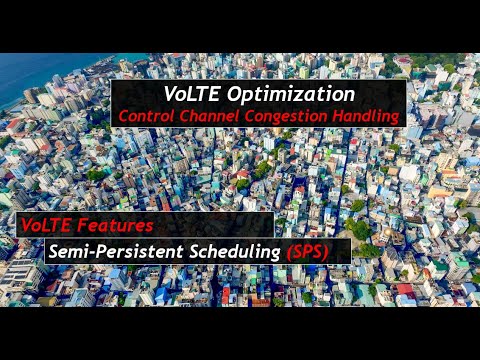This article, “VoLTE Optimization: Control Channel Congestion Handling” explains all the options to mitigate congestion on LTE control channels.
As described in the previous article/video, VoLTE Capacity Planning and Design: A Dimensioning Cheat Sheet, the VoLTE traffic can impact LTE control channel (PDCCH) and it can cause congestion on the control channel. So, in this session, we will go through the options to mitigate this bottleneck by using various techniques and VoLTE features.
If we take 10MHz example, then if the cell uses all 3 PDCCH symbols, it will have 40 CCEs. If we have 200 VoLTE users and they are equally spread in time domain such that each subframe has 10 VoLTE users then 200 VoLTE users can be supported (20ms x 10 = 200). So, if we have 4CCE per VoLTE UE then all 40 CCEs will be consumed by the VoLTE users and there will be nothing left for data users Even if there is PDSCH resource available, a data user wont be able to be scheduled due to lack of PDCCH.
VoLTE Optimization: Control Channel Congestion Handling
Semi-Persistent Scheduling (SPS) is a good way to reduce PDCCH utilization caused by high number of active VoLTE users. If the UE supports SPS, then the system chooses the UEs that are in stable radio environment. Then these UEs get an allocation on time and frequency domain where they will continuously get data without any further PDCCH grant. The downside is that the user’s MCS (Modulation and Coding Scheme) cannot be changed. If the user was getting MCS13 (16QAM), it will keep getting MCS13 and if it moves to bad radio conditions even then it will be getting MCS13 which can cause higher BLER and packet loss.
Another approach to reduce PDCCH utilization can be packet bundling. This can bundle 2 VoLTE packets together and send them on one PDSCH allocation. This will increase size of transport block and more PDSCH resources will be taken. by VoLTE packets since they are bundled together. Thus, it will increase the VoLTE packet interval from 20ms to 40ms As a result, the PDCCH utilization will be reduced by 50% under ideal conditions as can be seen below. However, the drawback is that this can increase latency in VoLTE and in certain conditions that can cause packet loss. This will be explained more in the upcoming videos
In case you have any queries or want to contact Ali Khalid, please feel free to drop a comment or connect with him on LinkedIn. Also, if this has been helpful, then please subscribe to our Youtube channel – Our Technology Planet for more exciting stuff and videos.
Ali Khalid
Latest posts by Ali Khalid (see all)
- 5G Coverage Expansion Analysis – Find The Optimal 5G Coverage Threshold For Your Network - November 9, 2024
- 5G Coverage Expansion - November 9, 2024
- 5G SA Cell Search & Network Entry Matrix - July 18, 2023
